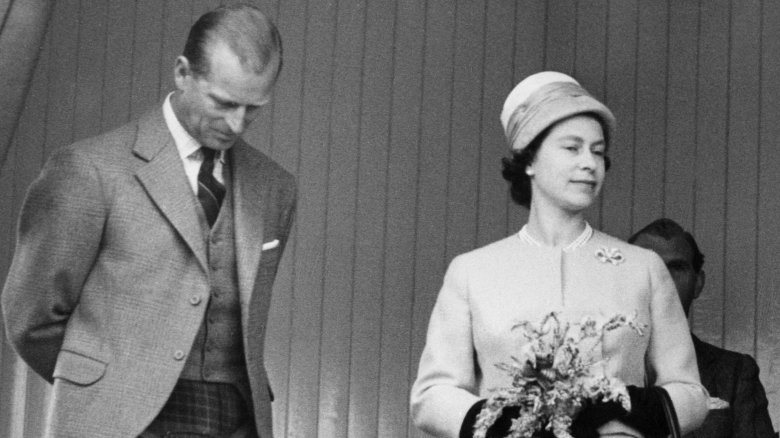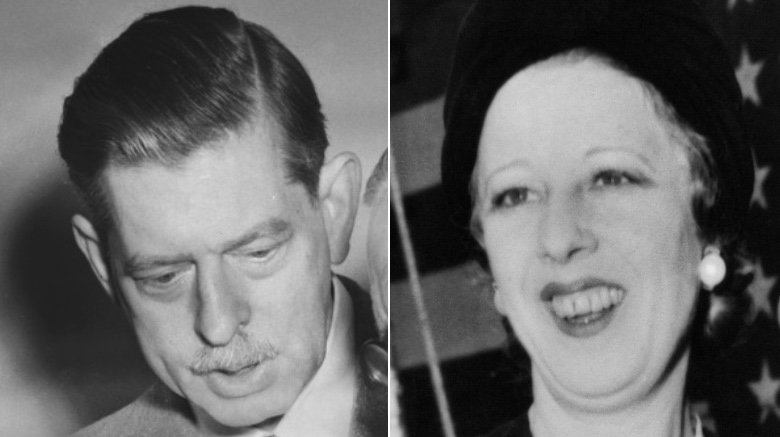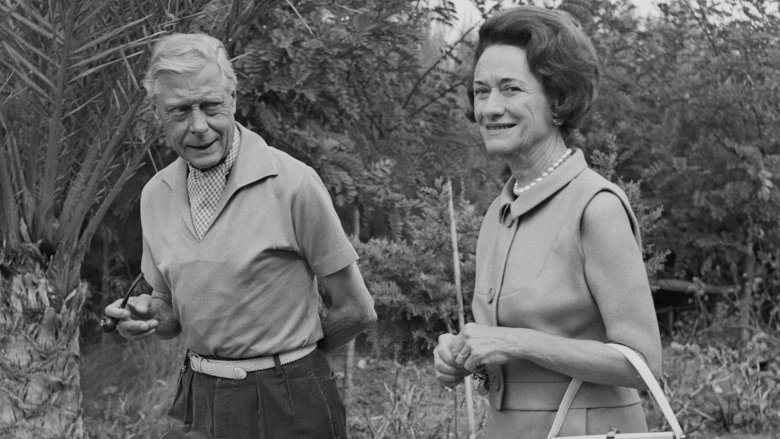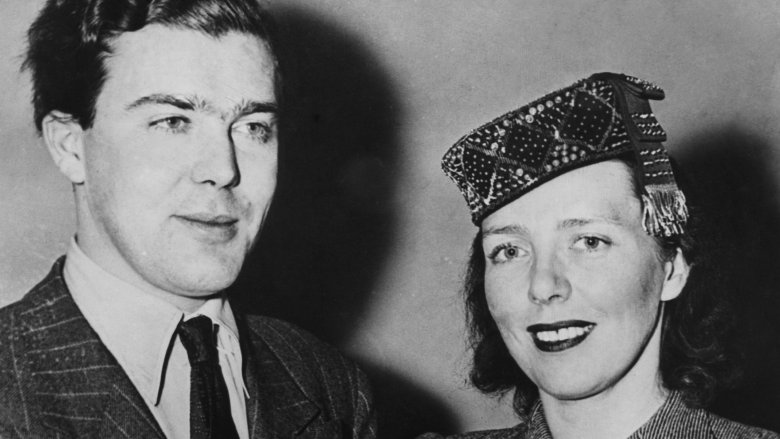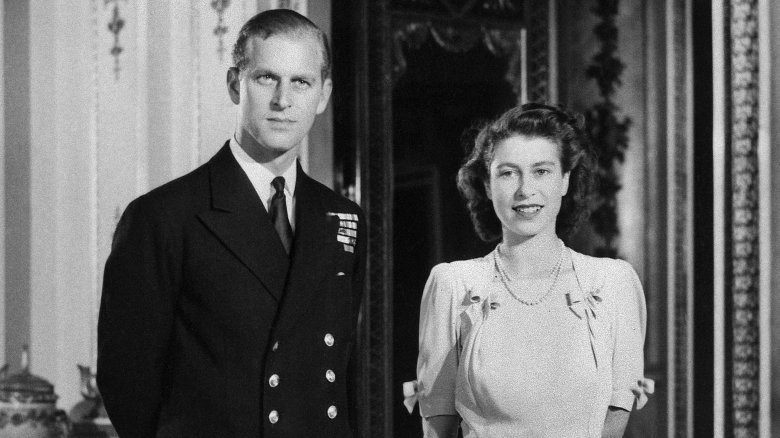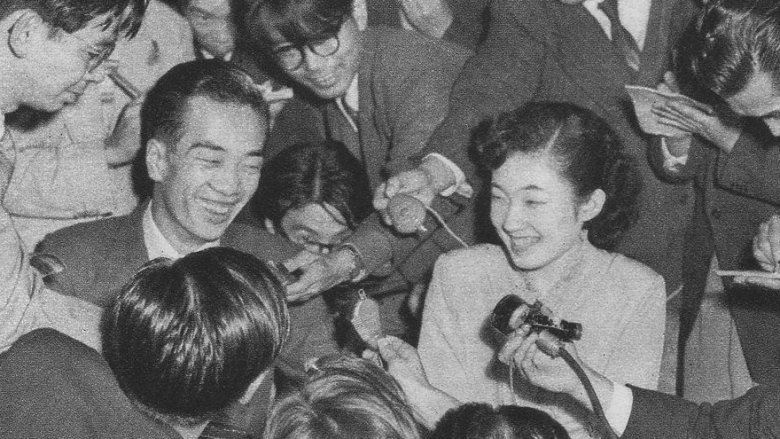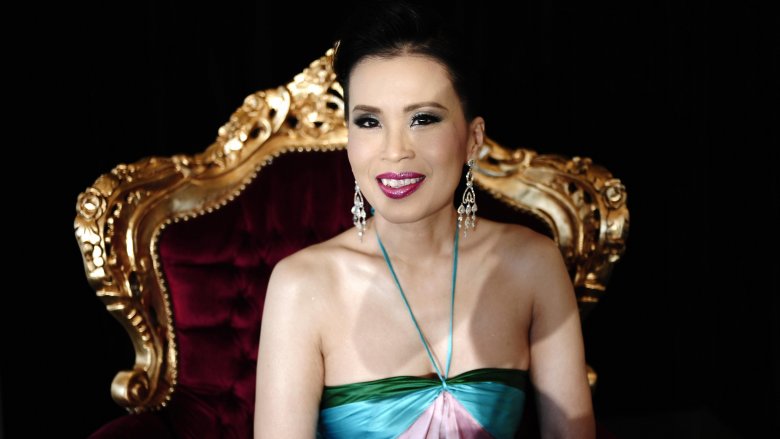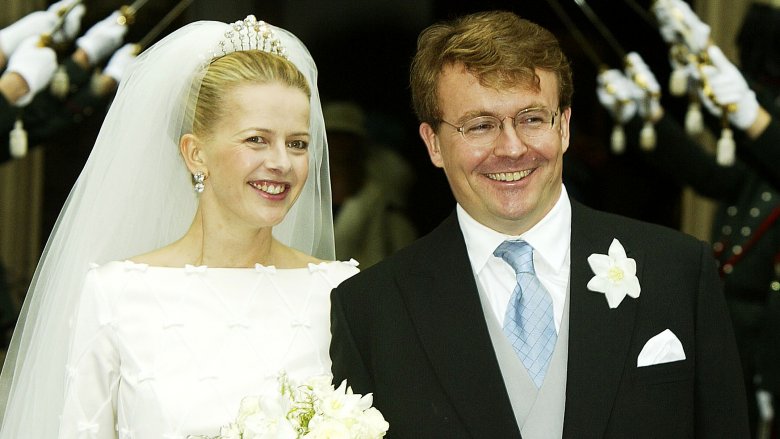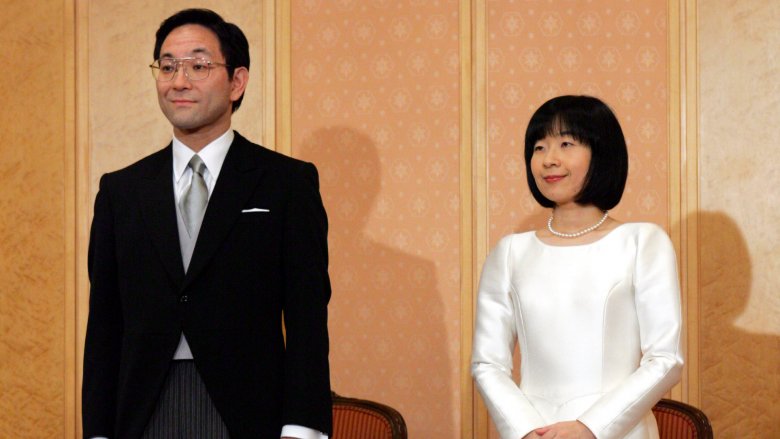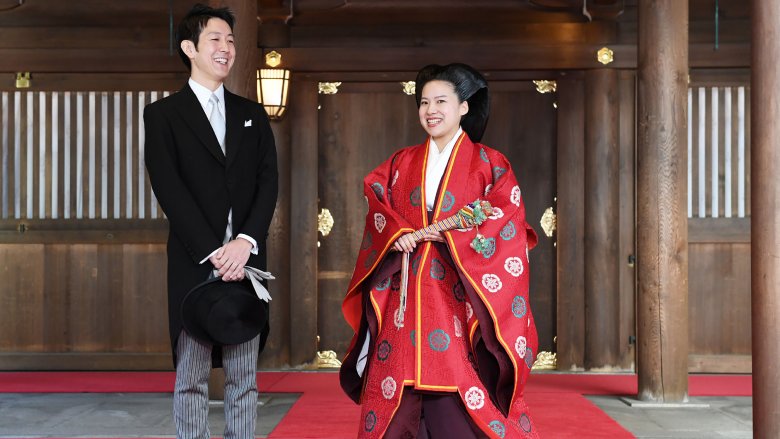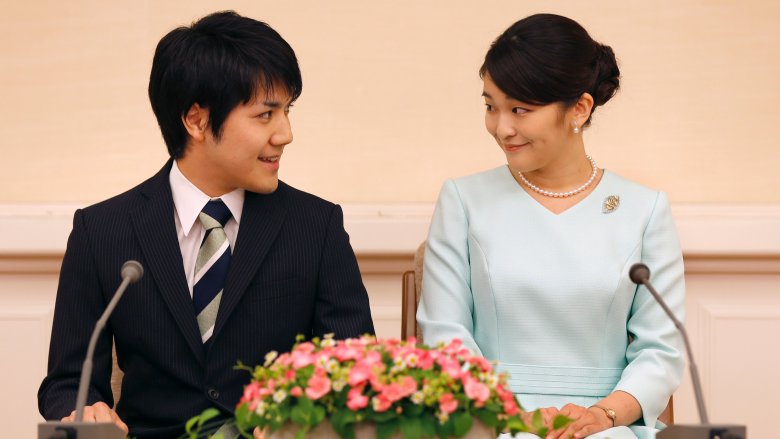Royals Who Gave Up Their Title For Love
"American culture is in love with love," said Chad Swiatowicz, who conducted a study on popular music. After analyzing the most popular songs between two periods — 2002 through 2005 and 1968 through 1971 — he discovered that 50 percent of the classics were about love and relationships and 60 percent of our favorite modern-day tunes were too. Yes, we love love — and we have for a while. But it's not just Americans who are hopeless romantics. Love is a universal language, after all — and it's a powerful force.
While love can indeed be magical, it can also be complicated. This is especially true if you happen to hail from royalty and end up falling in love with someone outside your caste. Across the world, some of the most noble and important royals have succumbed to the powers of love and willingly relinquished their positions to be with "the one." These are their stories.
King Carol II
Carol II, the oldest son of King Ferdinand I, the ruler of Romania, became crown prince after the death of his great uncle in 1914. The thing about Carol was, well, he lived a scandalous life. In 1918, Carol married Jeanne Marie "Zizi" Lambrino, the daughter of an officer. Although she was of a much lower rank, the marriage was considered legally valid. Carol and Lambrino would end up divorcing and the crown prince would go on to marry a woman of higher rank: Helen, the daughter of the King of Greece.
The union was not a happy one, though, and Carol entered into an affair with a "Jewish adventuress" named Magda Lupescu, reports the Encyclopedia of Britannica. In 1925, Carol renounced his rights to the throne and went into exile. Despite being removed from the line of succession, he did end up becoming the King of Romania in 1930, but was forced to abdicate and go into exile — yet again — just ten years later. Carol and Lupescu went on to get married in 1947 and they remained together until Carol's death.
King Edward VIII
In a scandal that marred the British royal family for decades and changed the course of history, King Edward VIII chose to abdicate the throne to marry Wallis Simpson, an American divorcée, in 1936. Edward had been sitting on the throne for mere months when he addressed the nation with his decision. "I have found it impossible to carry on the heavy burden of responsibility and to discharge the duties of king, as I would wish to do, without the help and support of the woman I love," he said in a radio broadcast at the time (via History).
The very next day, Edward's younger brother, Prince Albert, was named the new ruler and thus titled King George VI. Despite the scandal, George named his brother the Duke of Windsor and, in June 1937, Simpson and the Edward married. Though his relationship with his family would never be the same, the former king and his wife would have each other until Edward's death in 1972.
These Swedish princes
In February 1946, Carl Johan, Prince of Sweden, decided to renounce his royal title to marry journalist Kerstin Wijkmark. When questioned about her commoner status, The New York Times quotes Wijkmark as saying, "I don't know exactly what that means." Her new husband and former prince chimed in, replying, "Neither do I." But Carol Johan (later Carl Bernadotte) wasn't the only Swedish royal to relinquish his position for love.
According to The New York Times, Bernadotte's great uncle did the same in 1888. As did his cousin, Lennart, in 1932. Just two years after Lennart married, Bernadotte's brother Sigvard also gave up his title to marry a commoner. Their other brother, Bertil, also engaged in a three-decade affair with a commoner before eventually marrying her in 1976. These Swedes were certainly quite the romantics.
Although Wijkmark passed away in the late '80s, Bernadotte found love once more in his lifetime. He married Countess Gunnila Marta Louise Wachtmeister — quite the name, eh? — the following year.
Prince Philip
Prince Philip may have been born a royal, but he still had to renounce his title if he wanted to one day marry Queen Elizabeth II. You see, Philip wasn't British royalty — despite being the distant cousin of his eventual wife. Yes, that's right, cousins. Philip was born to Prince Andrew of Greece and Denmark and Princess Alice. In order to marry then-Princess Elizabeth, he had to become a British subject and thus give up his position as heir to the throne in both Greece and Denmark. Upon doing so, he also took his mother's maiden name, Mountbatten.
Just before he and Elizabeth wed, he was given his new royal titles: Knight of the Garter, Baron Greenwich, Earl of Merioneth, and Duke of Edinburgh. Philip also served as the Queen's consort, a position the duke didn't quite love at the start. Nevertheless, the Queen of England and Prince Philip's marriage has stood the test of time.
Princess Atsuko
In October 1952, Princess Atsuko, the 21-year-old daughter of Japanese Emperor Hirohito, married the 25-year-old dairy farmer Takamas Ikda. At the time, the princess was forced to give up her title, according to Encyclopedia of Japan: Japanese History and Culture, from Abacus to Zori. In addition to losing her title, Time reported that her marriage also meant she would no longer be able to collect her annual royal allowance which, at the time, was ¥650,000 (about $1,800). That may not sound like a whole lot today, but the sum wasn't exactly pennies back in the early '50s. Still, Atsuko must've felt that love was greater than both money and rank.
Despite her marriage to a non-royal, 30 members of the royal family attended the ceremony. Her father, however, was not in attendance. According to a Time report from that day, it wasn't because he disapproved, but because he was "in bed with a cold."
Princess Ubolratana
Princess Ubolratana was born into Thai royalty as the first-born of Bhumibol Adulyadej and Sirikit Kitiyakara — the King and former Queen Consort, now Queen Mother, of Thailand, respectively. According to Public Radio International (PRI), the princess relocated to the United States to study at the Massachusetts Institute of Technology and, later, the University of California. While in school in Boston, Ubolratana met — and fell in love with — an American man, Peter Jensen.
Los Angeles Times reported that this was quite the scandal back when it happened back in 1972. Regardless, the princess willingly gave up her royal position and married Jensen. This also led to her being banished from her family. Though, they did eventually make peace. Sadly, Ubolratana and Jensen's love story would come to an end in 1998. Jensen and the former princess divorced after having three children and Ubolratana ultimately made her way back to Thailand, children in tow.
Prince Friso
Prince Friso was once known as "Prince Brilliant," according to The Washington Post. He was the son of former Queen Beatrix of the Netherlands. The Dutch prince attended the University of California, the Deft University of Technology in the Netherlands, as well as Erasmus University, which is also in the Netherlands. Brilliant, he certainly was.
Although an heir the throne, Friso gave it all up for a woman named Mabel Wisse Smit. Surprisingly, the royal family didn't seem to have a problem with the wedding. In fact, the Queen actually was fond of Smit. It wasn't until her former relationship with drug kingpin Klaas Bruinsma came to light that the engagement was called into question.
The prime minister of the time chose not to approve of the couple's union. But, even without the necessary approval from parliament, Friso and Smit married anyway. Although they would have the "honorific titles" of Prince and Princess of Orange-Nassau, Friso was removed from the line of succession immediately.
Princess Sayako
In November 2005, Japanese Princess Sayako, the only daughter of Emperor Akihito and Empress Michiko, relinquished her title in order to marry a commoner, urban planner Yoshiki Kuroda. Sayako's parents and other close family members joined the couple in celebrating their union at a hotel in Tokyo. While you could (rightfully) take this to mean that the Emperor and Empress didn't disprove of their daughter's choice of husband, it wasn't really up to them. It was — and still is — up to Japanese law. The Telegraph reported that Sayako had to forego both her position in the imperial family and her "generous palace allowance." But that was A-okay with Sayako.
"I want to learn various new things and I look forward to a new life as a member of the Kuroda family, while treasuring in my heart the life I have led up until now with their Majesties and my family," Sayako revealed in a Japanese television interview (via The Telegraph).
Princess Ayako
Princess Ayako, the 28-year-old daughter to Princess Hisako and late Prince Takamodo, married Kei Moriya, a shipping company employee, in October 2018. Despite the beyond beautiful wedding attended by friends, family, and well-wishers, Ayako's big day was bittersweet. Just as Princess Sayako was forced to give up her title as princess, so too was Ayako.
According to CNN, the Japanese imperial law responsible for this outcome is one that only applies to women. Upon marrying a person from a background other than aristocratic or royal, female royals "forfeit their titles, status, and allowance." However, the government did award the former princess nearly a million dollars to cover living expenses. So, no, not the worst honeymoon present ever, but still quite an adjustment for Ayako.
"I am awed by how blessed I am," Ayako said on her wedding day. She continued, saying, "I will leave the imperial family today, but I will remain unchanged in my support for his majesty and her majesty." No, you're crying.
Princess Mako
Princess Mako may just become the next Japanese royal to relinquish her title for love. Although Mako had originally planned to give up her title and marry commoner Kei Komuro in late 2018, the couple postponed their wedding until 2020. Is Mako having cold feet about giving up her royal title? A statement provided to CNN seems to indicate otherwise. "It is because of our immaturity and we just regret it," 26-year-olds Komuro and Mako explained. Mako added, "I wish to think about marriage more deeply and concretely and give sufficient time to prepare our marriage and for after the marriage."
CNN further cited sources from the Imperial Household, who confirmed that the "lack of preparation" was the reason for the couple's postponement. When Komuro and Mako do eventually wed, the princess will join the other royals who've traded in royalty for romance. That is, unless the law changes first, of course.
